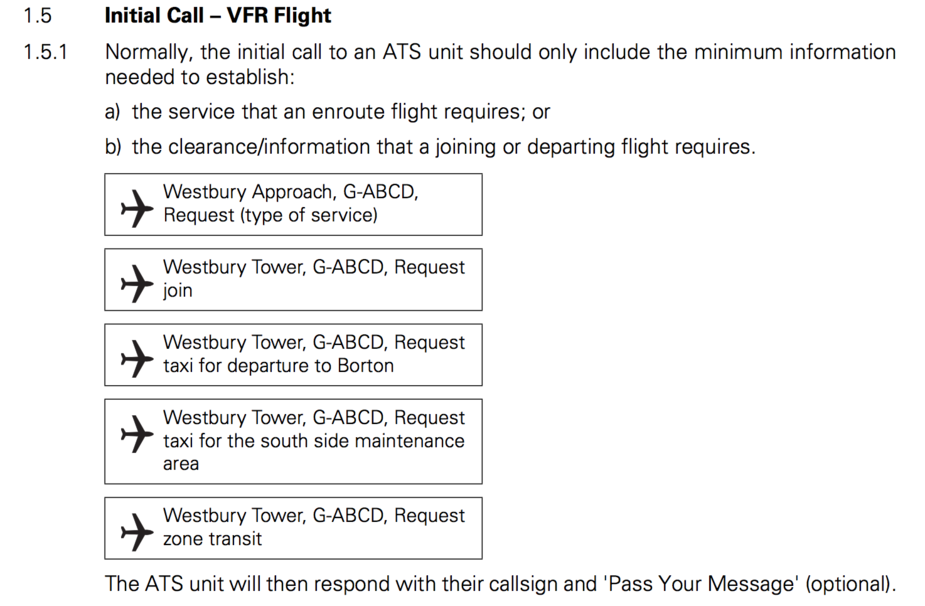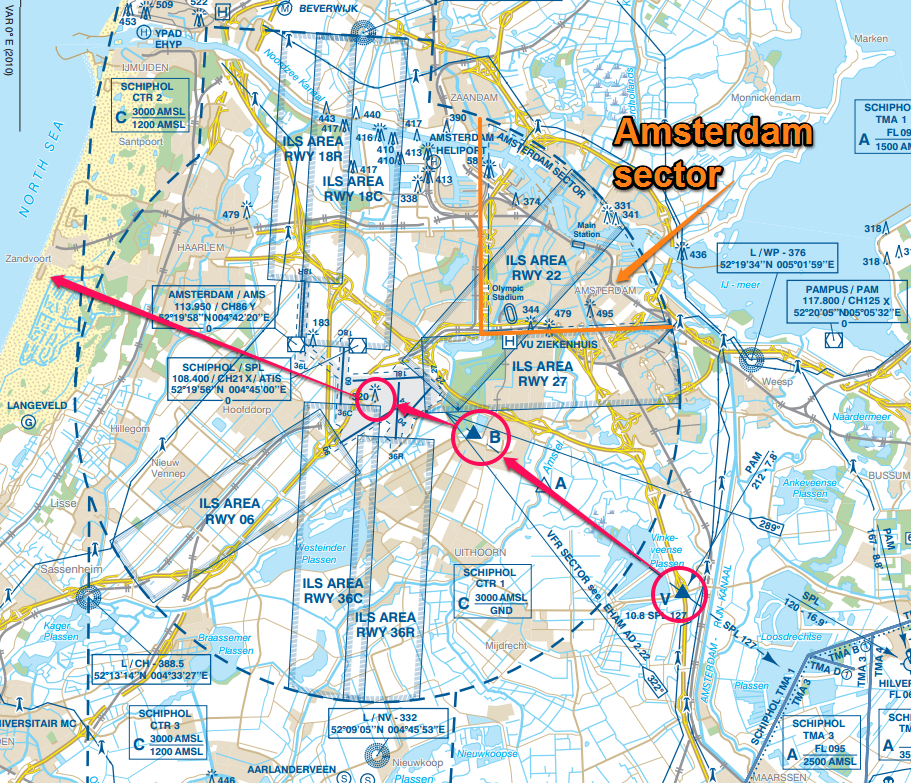CAP 413 is your friend.
Initial message:
See section 1.5.1
Westbury Tower, G-ABCD, Request zone transit
That’s it. A good morning/afternoon/evening is always appreciated too.
so
Westbury Tower, G-ABCD, Good whatever, Request zone transit
ATC will answer with pass your message.
You should give your details now.
See it that way: If you greet a person you don’t start with what you want and give more information.
ATC doesn’t bite your head off if you miss a bit, they just ask.
They also need time to be ready to record your details. What would you say if they reply to your initial message with: G-ABDC cleared to enter control zone via xx point not above 1500ft, report passing runway threshold….
From CAP 413 – CAA’s RT Manual:
Initial Call – VFR Flight
Normally, the initial call to an ATS unit should only include the minimum information needed to establish:
a) the service that an enroute flight requires; or
b) the clearance/information that a joining or departing flight requires.
e.g.
Westbury Approach, G-ABCD, Request (type of service)
Westbury Tower, G-ABCD, Request join
Westbury Tower, G-ABCD, Request taxi for departure to Borton
Westbury Tower, G-ABCD, Request taxi for the south side maintenance area
Westbury Tower, G-ABCD, Request zone transit
1.6 1.6.1
1.6.2
The ATS unit will then respond with their callsign and ‘Pass Your Message’ (optional).

ATC will answer with pass your message. You should give your details now.
But this is exactly the problematic bit. If they don’t ask for anything specific (like aircraft type or position), the “message” to be passed can just be anything. And this is exactly what you hear on the radio: Anything. Sometimes every thing. But “pass your message” is UK special. Anywhere else they will ask what exactly they want to know.
the “message” to be passed can just be anything.
Yes it is a UK thing, but the answer is not much different from what I learned during my BZF (German FRTOL) course 30 years ago.
In Germany you just use ‘go ahead’ as the first response from ATC
Also in CAP 413:
1.6.3
When instructed by the ATS Unit to pass your message details, the reply should contain the following information, whenever possible in the order specified:
a) Aircraft Callsign / Type
b) Departure Point and Destination
c) Present Position
d) Level
e) Additional details / Intention (e.g. Flight Rules, Next route point)
Some local tips regarding The Netherlands:
- The Terminal Areas around Amsterdam EHAM are Class A airspace. You need to route around it, or fly below it. No way to fly through them.
- All CTR’s are class C airspace.
- You’ll usually get a clearance for all CTR’s except Amsterdam Schiphol EHAM.
- Amsterdam EHAM CTR → Depending traffic you might get a clearance. It’s very cool to do. They even let you fly an orbit around the Tower!
You need to file a FPL. The route is: Entry via V → B → Tower → Zandvoort (or vice versa)
- Amsterdam City Center → There is a sector in the North East called the “Amsterdam Sector”. If RWY22 is not active, you can enter it at 1000ft for some sightseeing over the City Center. They will ask you to report the “Main Station”.

- It’s a flat country. Crossing it at 1500ft below controlled airspace is doable.
- It’s a flat country. Crossing it at 1500ft below controlled airspace is doable.
With all the windmills. The biggest problem is turbulence that close to the ground.
I like the approach to EHAM. Victor is quite easy to find, then head for the Bovenkerk (Church)
Their VFR procedure is a bit strange with the rate 2+ turns: make sure you have enough speed.
With all the windmills. The biggest problem is turbulence that close to the ground.
I know somebody who flew a TB20 between the (rotating) blades of a wind turbine, down there somewhere. But, as always with these things, my lips are sealed 
Regarding the War & Peace radio call habits, IMHO the issue is that the PPL population is mostly stagnant, with very little “new talent”, and most of the “active pool” is doing 10-30hrs/year, and I am damned if I would remember how to start the engine if I was doing that. The only contact they have with the training scene is every 2 years, and the instructor will sign their logbook so long as he survives the flight.
It does require a flightplan (SERA). It’s just that the various countries have very different ideas about what a flightplan is and entails.
SERA.4001 (a):
bq. […] The term ‘flight plan’ is used to mean variously, full information on all items comprised in the flight plan description, covering the whole route of a flight, or limited information required, inter alia, when the purpose is to obtain a clearance for a minor portion of a flight such as to cross an airway, to take off from, or to land at a controlled aerodrome. […]
SERA.4005 (a):
bq. A flight plan shall comprise information regarding such of the following items as are considered relevant by the competent authority: […]
So indeed (and unfortunately), according to SERA it is up to each country to decide what information is needed for requesting a crossing clearance. E.g. Sweden requires callsign, flight rules, aircraft type, route, level and persons on board.
SERA is the biggest fail in European harmonisation attempts.
Most countries deviate from SERA one way or the other. Some like Germany just issue NOTAMs to keep the status quo.
SERA is only a success if the rules are the same.
I do feel that SERA is a considerable step forward in harmonisation, but much more could have been done.